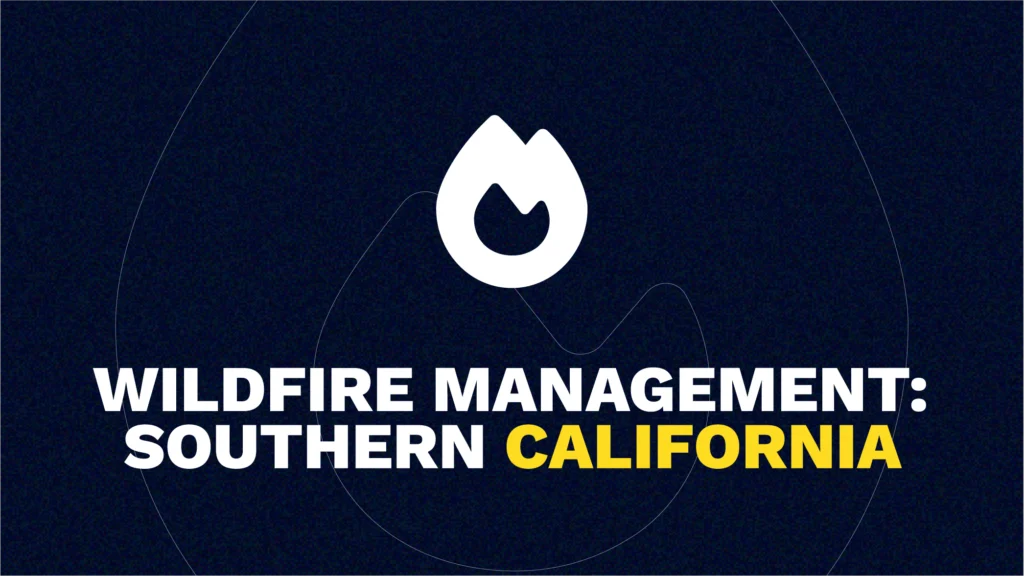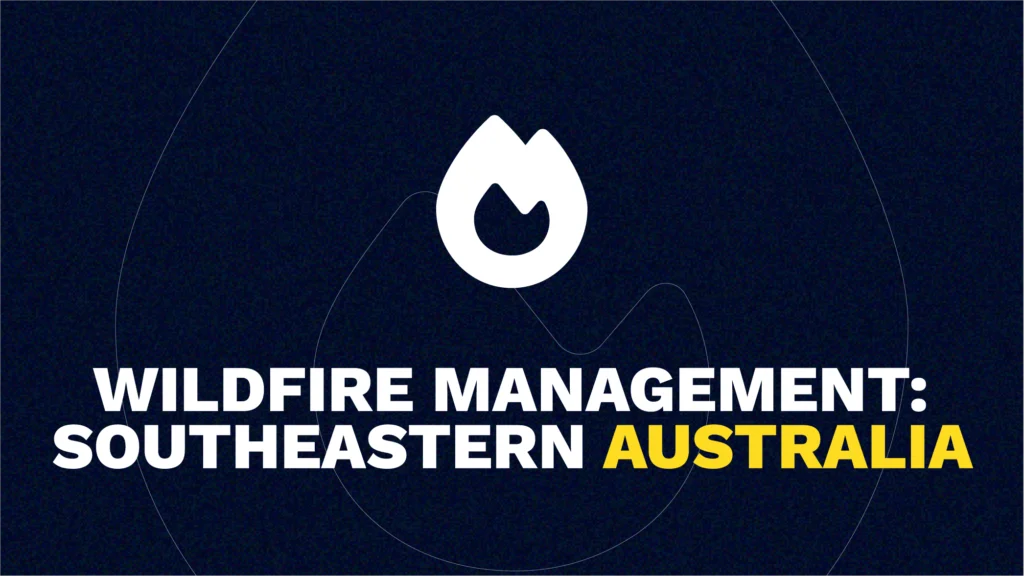Introduction
In recent years, climate change has altered the frequency and intensity of wildfires, leading to longer fire seasons characterized by droughts and high wind events. This trend is particularly evident in regions like Southern California and Southeastern Australia, where similar climatic conditions create conducive environments for wildfires to thrive. Compounded by urban expansion into high-risk areas, both regions face mounting challenges in wildfire management. Understanding and comparing wildfire management policies and strategies in these regions are crucial not only for policymakers and emergency responders but also for communities at risk. In this blog post, we will explore the differences and similarities in policy approaches and firefighting strategies between Southern California and Southeastern Australia, shedding light on effective methods for mitigating wildfire risks and enhancing resilience in the face of escalating climate-related challenges. Throughout our analysis, we will explore the role of policy in fire operations, the significance of leveraging community participation to effectively combat wildfires and safeguard communities.
Wildfire Management in Southern California

Policy Emphasis
In Southern California, wildfire management is guided by a multifaceted approach that encompasses various strategies aimed at prevention, mitigation, and community resilience. Central to this approach is the implementation of policies outlined in the National Fire Plan and the Healthy Forest Restoration Act. These federal initiatives prioritize the reduction of hazardous fuels in wildfire-prone areas, with a particular emphasis on the Wildland-Urban Interface (WUI). To achieve this goal, prescribed treatments are employed to reduce surface, ladder, and canopy fuels, regardless of forest type, thereby decreasing the likelihood and severity of wildfires. Additionally, Southern California’s wildfire management efforts extend beyond forest management to include land use planning, vegetation management, and building codes. Through zoning regulations, growth boundaries, and land acquisition, communities aim to limit development in high-risk areas and create defensible space around structures. Furthermore, education, community assistance programs, and the implementation of building codes that mandate fire-resistant materials contribute to enhancing structural resilience and reducing the risk of home ignition during wildfires. By integrating these strategies, Southern California works to mitigate wildfire risks and foster more resilient communities in the face of increasingly prevalent and severe wildfire events.
Firefighting Strategies
In Southern California, firefighting strategies are characterized by rapid response and the deployment of both aerial and ground resources to contain and extinguish wildfires swiftly. With the region’s propensity for fast-spreading fires exacerbated by dry conditions and high winds, the prompt mobilization of firefighting personnel and equipment is essential to prevent the escalation of incidents. Aerial assets such as helicopters and air tankers are utilized to deliver water and fire retardant to strategic areas, while ground crews work tirelessly to establish containment lines and extinguish hotspots. Additionally, prescribed burning plays a crucial role as a preventative measure to reduce fuel loads and mitigate the risk of catastrophic wildfires. By strategically implementing controlled burns during periods of favorable weather conditions, fire agencies aim to create defensible space, enhance ecosystem health, and minimize the potential for large-scale wildfire events. Through a combination of rapid response efforts and proactive measures like prescribed burning, Southern California endeavors to effectively combat wildfires and safeguard communities and natural resources from the devastating impacts of uncontrolled fire incidents.
Community Engagement
Community engagement is fundamental to effective wildfire management in Southern California, highlighting the importance of involving residents in preparedness and response efforts. Historically, practices of fire suppression aimed at preventing asset loss have influenced community perceptions of wildfire disasters, shaping expectations and responses. In many Californian strategies, evacuation is strongly encouraged over attempting to defend homes, considering safety as the paramount concern. However, for those who opt to stay and protect their properties, adequate education and resources are crucial. Initiatives like Firewise communities promote proactive measures and provide valuable guidance on creating defensible spaces. Collaborative efforts between government agencies and local communities further enhance preparedness and response capabilities, fostering a culture of shared responsibility and mutual support. Nonetheless, concerns about traffic congestion during evacuation events raise questions about the feasibility of mass evacuations, prompting discussions on the potential safety benefits of sheltering in place under certain circumstances. Through robust community engagement and collaboration, Southern California endeavors to strengthen resilience and mitigate the impacts of wildfires for the well-being of all residents.
Wildfire Management in Southeastern Australia

Policy Emphasis
Wildfire management in Southeastern Australia is also characterized by a strong emphasis on prescribed burning, fuel reduction, and adaptive land management strategies. Recognizing the importance of mitigating fire risk while preserving ecological integrity, policymakers prioritize methods that strike a balance between wildfire prevention and environmental conservation. One notable aspect of Australian wildfire policy is the empowerment of community members to assist in firefighting efforts, fostering a sense of shared responsibility and collaboration in fire management. Additionally, there has been a resurgence in traditional fire management practices, such as the reintroduction of fire stick farming, acknowledging the wisdom of indigenous land management techniques. By integrating these approaches, Southeastern Australia aims to enhance its resilience to wildfires while promoting sustainable land stewardship practices.
Firefighting Strategies
In combating wildfires, Australia employs a multifaceted approach that combines traditional practices with modern firefighting strategies. Prescribed burning is a key component of Australia’s wildfire management efforts. By intentionally setting fires under controlled conditions during cooler months, authorities reduce the buildup of flammable vegetation, thereby lowering the risk of uncontrollable wildfires during the hotter, drier seasons. This proactive measure not only helps to mitigate the severity of future fires but also promotes ecosystem health and resilience.Moreover, Australia invests heavily in advanced technology and early warning systems to detect and respond to wildfires swiftly. This includes the use of satellite imagery, drones, and sophisticated modeling tools to monitor fire behavior, identify vulnerable areas, and coordinate firefighting resources effectively.
Community Involvement
Community involvement in firefighting efforts is a major theme of wildfire preparedness strategies in Australia, where the threat of bushfires is a recurrent challenge. Research conducted in southern Australia has shed light on the significant risks associated with individuals who choose to stay and defend their homes during wildfires, revealing that their survival chances are halved compared to those who evacuate early. This finding has sparked discussions and debates among residents and authorities about the best course of action in the event of a bushfire. The concept of “leave early or stay with the house” has become a pivotal decision point for residents living in fire-prone areas, highlighting the complex considerations involved in wildfire evacuation planning. In situations where evacuation routes may be compromised or deemed unsafe, authorities advise residents to shelter in place and enact their bushfire survival plans. Recognizing the importance of community resilience, the Australian Capital Territory (ACT) has taken proactive measures by establishing community fire units. These units are given training, equipment, and support fellow residents, empowering them to play an active role in wildfire preparedness and response efforts. Such initiatives underscore the critical role of community engagement in enhancing overall resilience to wildfires and mitigating the impact of these natural disasters on communities and ecosystems.
Comparative Analysis
Strategies
Both the US and Australia have recognized the importance of prescribed burning as a vital tool in reducing fuel loads and mitigating wildfire risk. While this method has historical roots in both nations, Australia’s approach is increasingly being informed by Indigenous fire management practices. This integration not only enhances the effectiveness of prescribed burning but also promotes cultural preservation and environmental stewardship. However, some critics argue that the US’s prescribed burning efforts are hindered by policy constraints, leading to a less aggressive approach. It’s important to note that although each country can learn from each other, the differences in plans and ecosystems must be prioritized in this respect.
Despite differences in prescribed burning practices, both the US and Australia share similarities in the deployment of advanced technology and community involvement in firefighting efforts. Advanced technology, such as early warning systems and aerial firefighting resources, is leveraged in both regions to enhance situational awareness and response capabilities. Additionally, community involvement in firefighting, including training programs and volunteer efforts, is recognized as a valuable asset in both countries. However, there may be differences in the extent and nature of community engagement, reflecting variations in cultural norms, institutional structures, and societal expectations.
Community
Difference in community involvement between Australia and California presents an opportunity for cross-regional learning and collaboration. By sharing best practices and lessons learned, Californian policymakers and communities can better prepare for wildfire events and enhance overall resilience. Similarly, Australian stakeholders can benefit from insights into California’s approaches to community engagement, potentially informing future wildfire management strategies in their own context. Through collaborative efforts and knowledge exchange, both regions can work towards more effective and sustainable wildfire management practices, ultimately reducing the impact of wildfires on communities and ecosystems.
Evacuation
A notable contrast in wildfire response strategies between Australia and the US lies in their approaches to evacuation. While the US prioritizes evacuations as a primary response to wildfires, Australia allows citizens to stay and defend their properties under certain conditions, leveraging communities as assets in firefighting efforts. In Australia, only able-bodied adults are advised to stay behind, provided they have adequate defensible space around their properties. This strategy reflects a reliance on community resilience and local knowledge to manage fire risks effectively. However, the effectiveness of this approach may vary in regions like California, where some areas may be less prepared for wildfire events. Nevertheless, some US towns are beginning to adopt Australian stay-and-defend techniques, recognizing their potential benefits. In situations where adequate preparation is undertaken, individuals staying to defend their homes may prove successful, particularly if evacuation is delayed or deemed unsafe. This highlights the importance of proactive measures and community engagement in wildfire preparedness and response efforts.
Conclusion
Wildfire management strategies in Southern California and Southeastern Australia reveal a complex landscape shaped by diverse policy approaches, firefighting strategies, and community engagement efforts. Both regions face similar challenges posed by climate change-induced wildfires, urban expansion into high-risk areas, and the need to balance fire risk mitigation with ecological preservation. Despite these shared challenges, notable differences exist in policy emphasis, firefighting strategies, and community involvement, reflecting unique socio-environmental contexts and institutional frameworks. However, there is much to be learned from each other’s experiences and practices. Australia’s integration of Indigenous fire management practices into wildfire policy offers valuable insights into enhancing the effectiveness of prescribed burning and fostering cultural and environmental stewardship. Conversely, California’s emphasis on rapid response and evacuation procedures highlights the importance of proactive measures and community engagement in mitigating wildfire risks. By sharing best practices, collaborating on research and innovation, and supporting each other in times of crisis, both regions can work towards more effective and sustainable wildfire management practices, ultimately reducing the impact of wildfires on communities and ecosystems. As climate change continues to exacerbate wildfire risks globally, the lessons learned from Southern California and Southeastern Australia serve as valuable guides for policymakers, emergency responders, and communities worldwide in building resilience and adapting to the evolving challenges of wildfire management.
Intterra
Leveraging advanced technologies such as Intterra provides a forward-thinking complement to the traditional and modern firefighting methods outlined in our analysis. Together we can reduce the impact of wildfires and safeguard vulnerable ecosystems and communities.